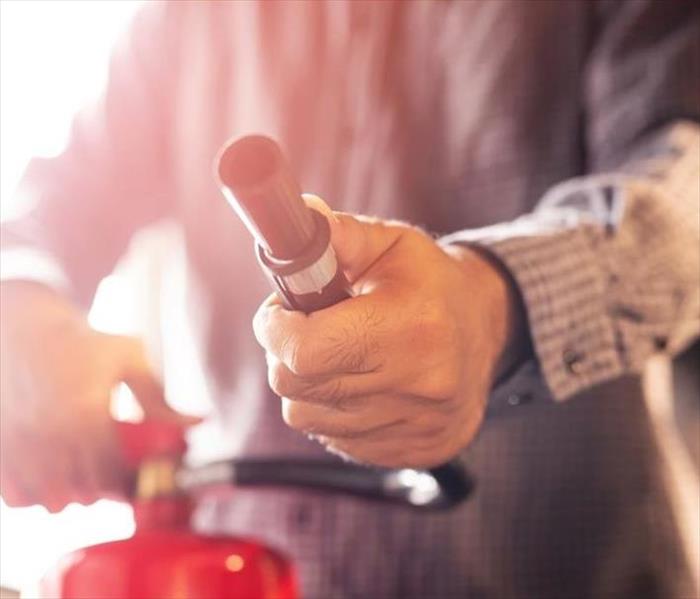SERVPRO® Pro Tips: Fire Extinguisher Use
11/16/2021 (Permalink)
A portable fire extinguisher can be a life and property saving tool when used correctly. In order to operate a fire extinguisher, the NFPA suggests remembering the word PASS.
- Pull the pin, pointing away from you and release the locking mechanism.
- Aim low. Point at the base of the fire.
- Squeeze the lever slowly and evenly.
- Sweep from side-to-side.
Read the instructions on the fire extinguisher and become familiar with it before a fire breaks out. Encourage your family members and coworkers to do the same.
Remember, extinguishers do have their limitations! It is also important to ensure you have the correct type of extinguisher for your home or facility.
Choosing the Appropriate Fire Extinguisher
- Class A: This is the most common extinguisher, and can be used to put out fires in ordinary combustibles such as cloth, wood, rubber, paper, and many plastics.
- Class B: Used on fires involving flammable liquids, such as grease, gasoline, and oil.
- Class C: Designed for fires involving appliances, tools, or other equipment electrically energized or plugged in.
- Class D: For use on flammable metals; often specific for the type of metal in question. These are typically found only in factories working with these metals.
- Class K: Intended for use on fires that involve vegetable oils, animal oils, or fats in cooking appliances. These extinguishers are generally found in commercial kitchens, but are becoming more popular in the residential market for use in kitchens.
Our SERVPRO Pros are Fire and Water Damage Specialists
The professionals of SERVPRO® have the training, experience and specialized equipment necessary to restore your home or business. We are committed to providing superior service while restoring your property back to pre-fire condition.
- Fire & Smoke Restoration Technician
- Odor Control Technician
- Upholstery & Fabric Cleaning Technician
- Water Damage Restoration Technician
Have Questions? Call Us Today- 508-757-7885




 24/7 Emergency Service
24/7 Emergency Service
